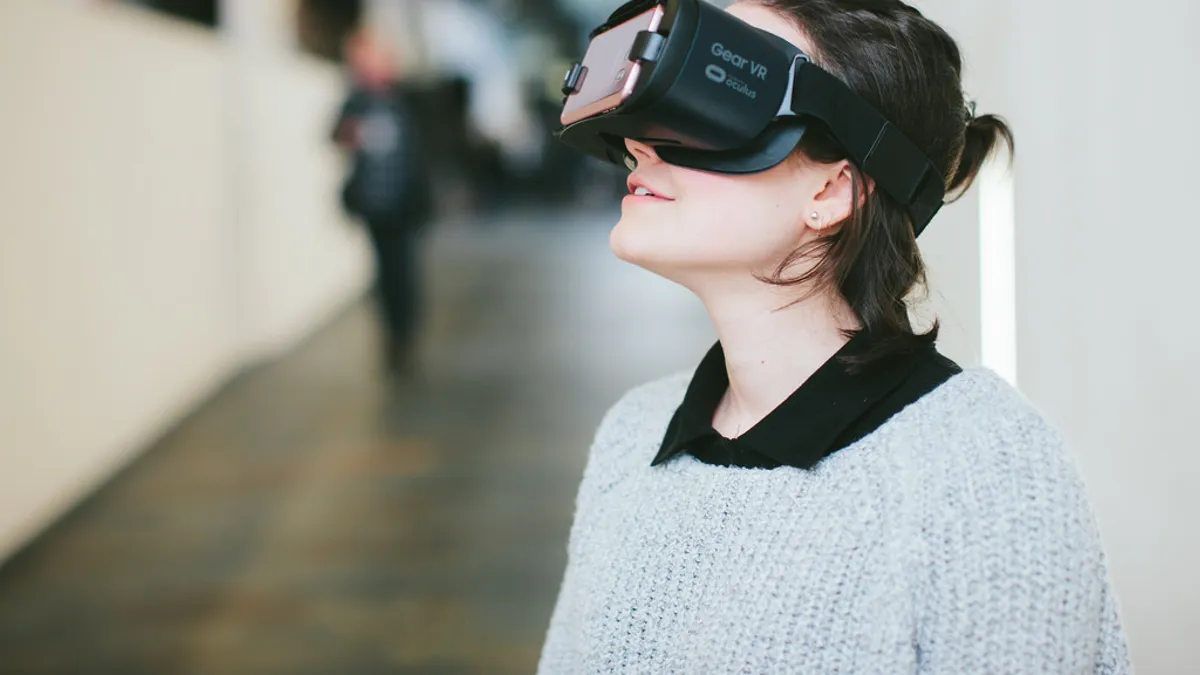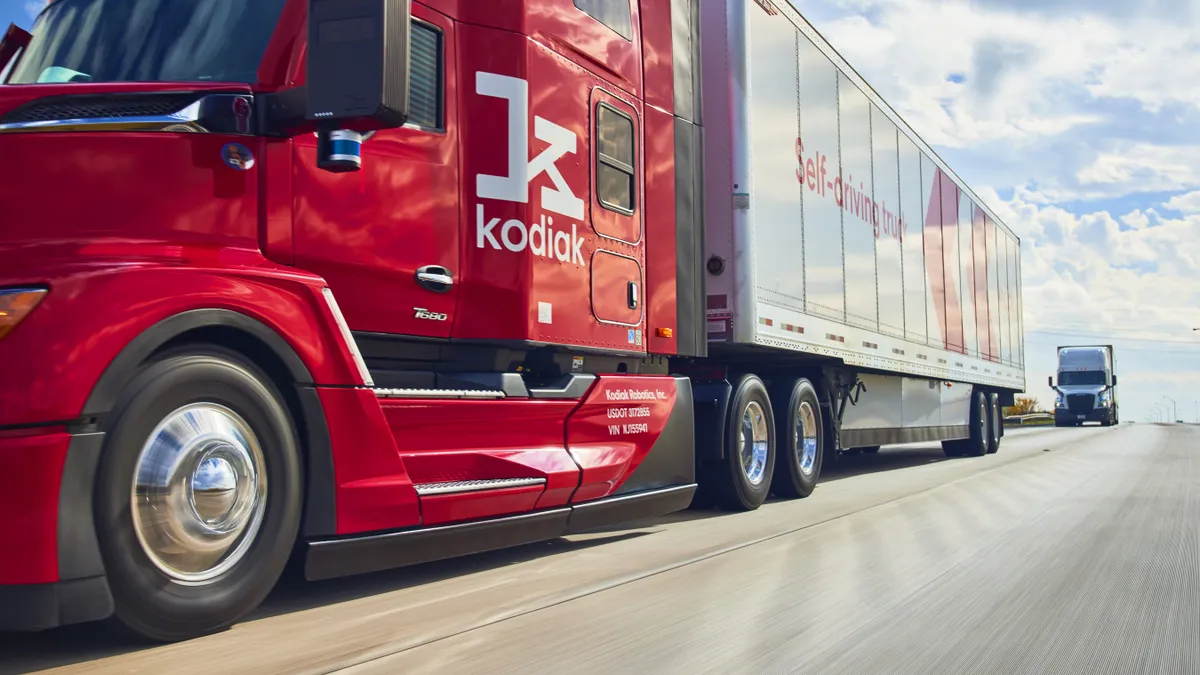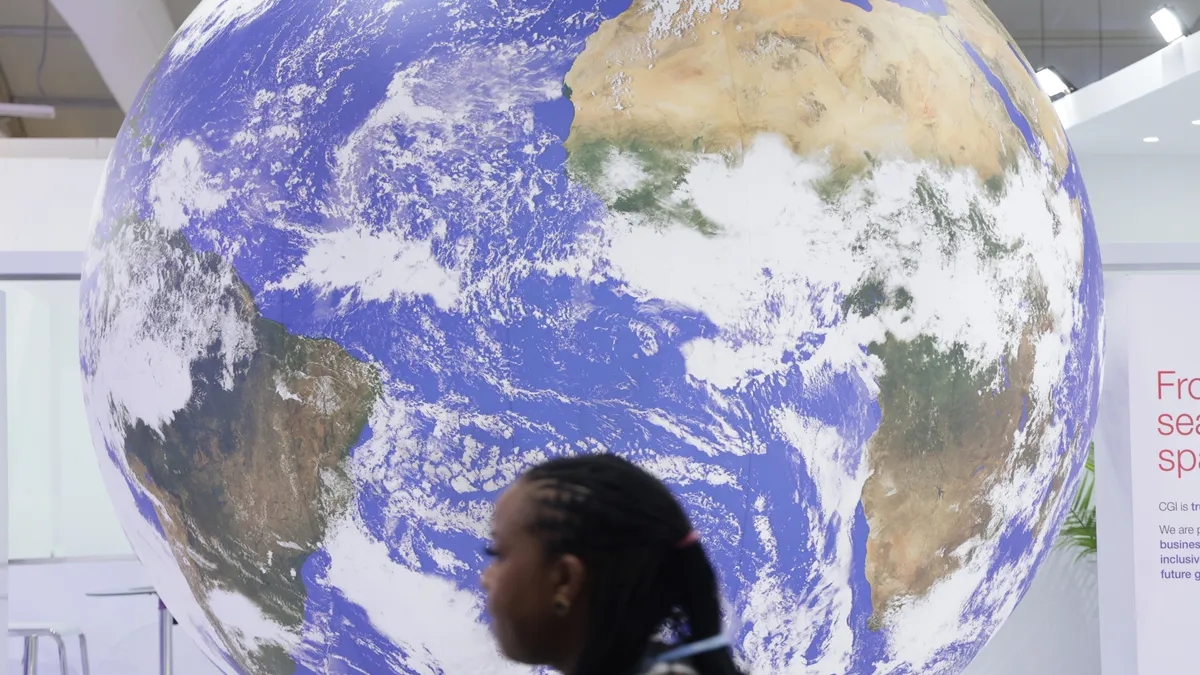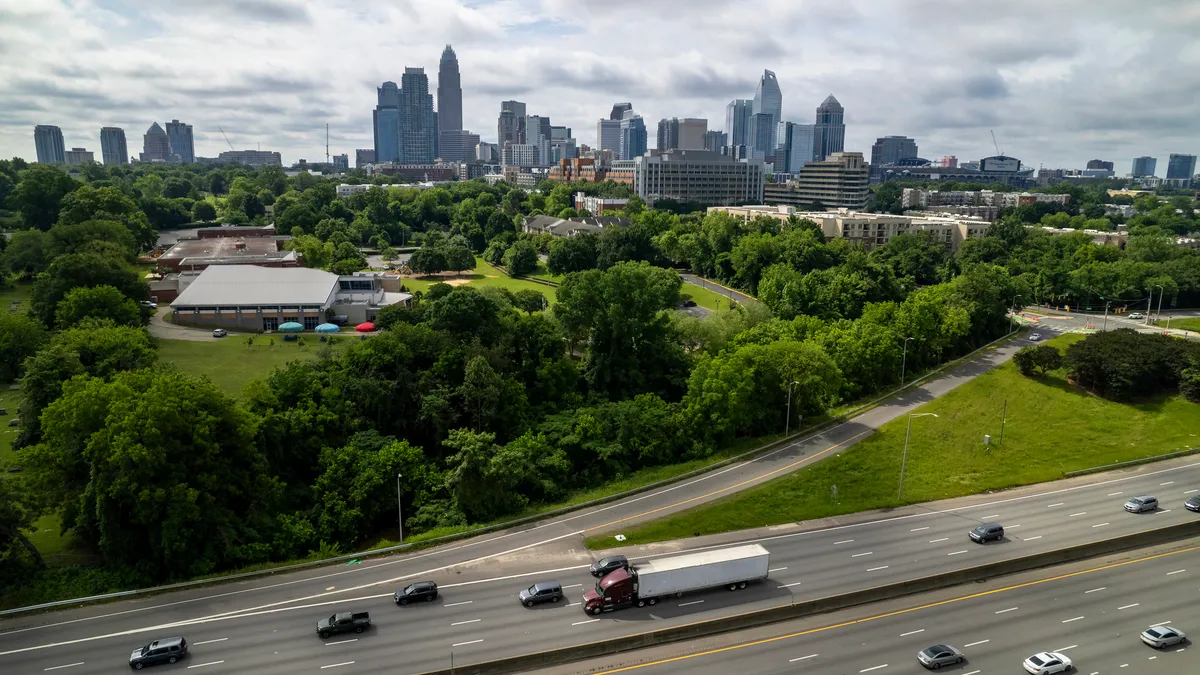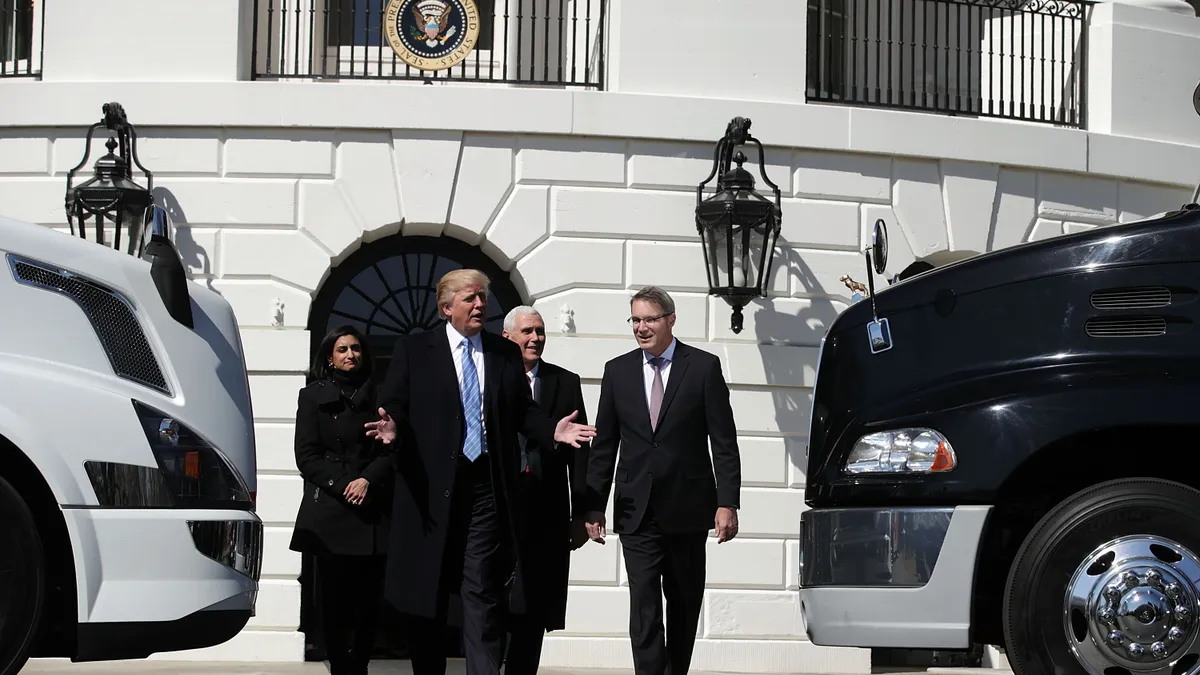Virtual reality and augmented reality are strongly associated with the gaming world. Players can don a headset or view surroundings through a mobile device and immerse themselves in other realms.
Or, a cross-dock worker at XPO Logistics can put on a headset and learn the "optimal method of loading freight for delivery," as the company described it.
XPO piloted VR training as a tactic to, among other things, mitigate freight damage. In the end, it said, the test yielded higher productivity, reduced waste and increased safety, as well as "shorter ramp-up times" for new trainees.
But the carrier wasn’t the first to use VR in training — and it certainly won’t be the last. The tool has proven to be effective.
Research done at Stanford University and the Technical University Denmark, cited by an Accenture report, found that virtual training methods resulted in a 76% increase in learning success over traditional methods.
Safely simulating unsafe conditions
One of the early adopters of VR was UPS, which has 105,000 drivers in the U.S. and a total of about 125,000 globally. In 2017, the carrier began employing VR simulators as part of its safe driver training.
"Introducing drivers into an unsafe virtual environment lets them practice how to react without having the real, dangerous experience," said Jon Bowers, director of learning technology at UPS.
"We all struggle with distractions that stall our engagement. The VR arena makes that next to impossible."

Jon Bowers
Director of Learning Technology at UPS
Defensive driver training via simulator happens in the first five days of training at UPS, and continuous learning happens as long as the driver is employed, he said. The training addresses various hazards in a safe environment and allows trainees to put the VR headset on many times during the 30-day training to learn in more detail.
"We all struggle with distractions that stall our engagement," said Bowers, "The VR arena makes that next to impossible. You have to concentrate on what you’re seeing and hearing."
A simulator also gives the driver knowledge on what to do when he or she experiences an unfamiliar situation, said Chris Orban, vice president of data science at Trimble, a technology company based in California.
Take, for example, a driver who has only hauled in Florida but signs on with an OTR fleet that asks the driver to travel over Donner Pass in California during the winter. Instead of a trainer telling the driver what to do, the driver can simulate the actual event, know what the wheel feels like, how the truck reacts and the best way to proceed — all without the extreme risk.
Safety is the bedrock of training at UPS, Bowers said. It has have more than 10,000 drivers who have gone 25 years without an accident.
"VR adds an additional layer of engagement to our company’s safe driver training," Bowers said. "It helps make our great driver group even better."
But the technology also presents opportunities for non-driving staff. UPS’ automotive unit is beginning to explore using VR for defensive driving training in a shop setting, because the mechanic has to drive the truck he fixes, Bowers said.
Proof in the AR pudding
While VR creates an entirely fabricated environment, AR overlays reality with additional information.
As Orban explained it, algorithms identify characteristics — such as road conditions and parking spaces — in video captured from forward-facing cameras. They can also measure distraction events captured by driver-facing cameras. That information is combined with telematics data.
"This is one of the most effective training patterns possible, because it uses both positive and negative behavior to show the driver the impact of his own actions."

Chris Orban
Vice President of Data Science at Trimble
"Then you can create systems to ‘augment’ reality with additional information. An overlay can be created, either helping to alert a driver to unsafe conditions, or to advise them on where they could find the safest parking space or route to a destination," Orban said via email.
AR is also an effective training tool. Because it considers multiple data points, an instructor is given more information when an incident occurs with a trainee. The driver also gets more detailed feedback — with some tools, a video overlaid with a projection of the consequences, be it good or bad, of a certain driving practice.
"This is one of the most effective training patterns possible, because it uses both positive and negative behavior to show the driver the impact of his own actions," Orban said.
Before shopping for immersive technology, fleets should make sure they're ready for the innovation. It takes work, Orban said, and a new way of thinking about reality and data.
But the return on investment is potentially enormous, said Orban. When it comes to fleet insurance or an accident-related lawsuit, using data elements gleaned from AR may help get to a resolution faster.
Orban said he can imagine AR being used to help recreate or simulate accidents. Such a tool could help prove a driver's innocence.
"Alternatively, a simulation, or close analysis of video data might reveal the [driver] was at fault," Orban said, "and a settlement should be proposed to get to a resolution as efficiently as possible."


